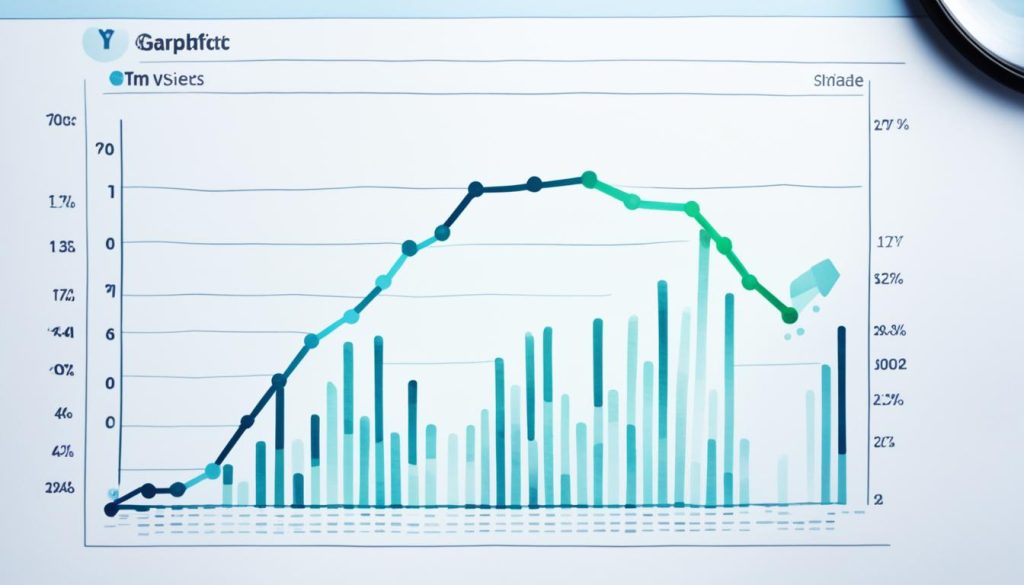Are you a new blogger finding it hard to get your site noticed online? The secret to boosting your blog might be in search engine optimization (SEO). Did you know that over 90% of all web traffic comes from search engines? This fact shows how important SEO is for your blog’s success.
This guide will show you how to use SEO to help new bloggers like you. We’ll cover the basics of how search engines work and share strategies to increase your online visibility. You’ll learn everything needed to improve your search rankings and draw in more readers.
Are you ready to elevate your blog and tap into SEO’s power? Let’s start this journey together and see the amazing results you can achieve.
What is SEO?
Search engine optimization, or SEO, makes your website more visible and higher in search engine results. It aims to help your target audience find your site when they search for certain keywords. By making your website better, you can reach more people and get more visitors.
Search Engine Optimization Explained
SEO uses many techniques to help search engines understand your website better. This includes making your website’s structure, content, and metadata better. It also involves getting high-quality backlinks to your pages. The goal is to make your website rank higher in search results, so more people can find and visit your site.
Importance of SEO for New Bloggers
SEO is key for new bloggers to get their content seen by others. With so much content out there, SEO helps you stand out. It brings more organic traffic to your site, helping you grow a loyal following and increase your search engine visibility. Learning about content discoverability is crucial for a successful blogging career and sharing your unique voice with more people.
How Search Engines Work
To understand the importance of search engine optimization (SEO) for new bloggers, it’s key to know how search engines like Google work. They use complex processes to discover, crawl, and index web pages. This helps them figure out how relevant a page is and where it should be in search results.
Google’s Crawling and Indexing Process
Google’s web crawlers, or “bots,” start by exploring the internet. They follow links to find new and updated content. When they find a page, they analyze its content and structure. They look at relevant factors to understand what the page is about.
Things like how well the page matches what the user is searching for, the quality of the content, and the site’s authority matter a lot. These factors help decide where the page will show up in search results. By knowing how search engines work and optimizing your content, new bloggers can get better rankings and reach more people.
Learning about how search engines work is the first step in mastering SEO for your blog. By making your content match how search engines find, process, and rank information, you can make the most of your online presence. This will help drive more visitors to your site.
Creating a List of Keywords
Keyword research is key to a strong SEO plan. It means finding out what your audience searches for and making your content rank for those keywords. Begin by using Google Suggest and other tools to gather a list of keywords. Include long-tail variations, which are less competitive but still bring in valuable traffic.
Keyword Research Techniques
Here are some ways to build a detailed list of keywords:
- Keyword brainstorming: Think about what you offer and list words and phrases your audience might use to find that.
- Google Suggest: Start with a seed keyword and see what Google suggests. These can spark ideas for long-tail keywords.
- Competitor analysis: Look at your competitors’ keywords in their content and meta tags. This can show you new opportunities.
- Keyword research tools: Use tools like Google Keyword Planner, Ahrefs, and Semrush to check search volume, competition, and related keywords.
Check the search volume and competition for each keyword to focus on the best ones. This ensures your content meets your audience’s needs and boosts your chances of ranking high.
| Keyword | Search Volume | Competition Level |
|---|---|---|
| keyword research | 22,200 monthly searches | High |
| long-tail keywords | 3,600 monthly searches | Medium |
| search volume | 27,100 monthly searches | High |
| competition analysis | 8,100 monthly searches | Medium |
Analyzing Google’s First Page
When you’re picking your target keywords, it’s key to look at the top content on Google for those terms. This helps you understand what kind of content is already doing well. It gives you insights into what search engine users want.
Check out the top 10 search results closely. Are they mostly guides, product lists, or list posts? Knowing this can help you make your content better. It ensures you give users the info they’re looking for.
Also, notice the keyword intent in the top content. Is it for information, shopping, or just finding something? Matching your content with the intent behind the keywords can really help you rank higher. It also brings in the right kind of visitors.
By analyzing the Google first page, you can find great ways to make your content better. This can make your SEO strategy stronger. It can help you beat your competitors.

| Ranking | Page Title | Content Type | Keyword Intent |
|---|---|---|---|
| 1 | Ultimate Guide to Search Engine Optimization | In-depth Guide | Informational |
| 2 | 10 Best SEO Tools for Beginners | List Post | Informational |
| 3 | SEO Strategies for Ecommerce Websites | Blog Post | Commercial |
| 4 | The Definitive Guide to On-Page SEO | In-depth Guide | Informational |
| 5 | How to Optimize Your Website for Search | Tutorial | Informational |
Identifying Your Competitors
Finding out who your main competitors are in the organic search world is key to a strong SEO plan. By doing a deep competitor analysis, you can spot websites that rank for similar keywords and aim for the same audience as you.
Start by using SEO tools like SEMrush. These tools give you important info on your organic search competitors. They show how many common keywords you both use and the traffic analysis each site gets.
Competitor Analysis Using SEO Tools
When looking at your competitors, pay attention to these main points:
- Shared keywords: See which keywords your competitors rank for that you might also aim for.
- Organic traffic: Learn how much traffic your competitors get from their organic search efforts.
- Content and optimization strategies: Check out how your competitors structure and optimize their content for better rankings.
This detailed competitor analysis will shape a smarter and more effective SEO plan. By knowing the competition, you can make your content and website stand out. This will bring more qualified visitors to your blog.
Remember, the secret to SEO success isn’t just beating your competitors. It’s about making something unique and valuable for your audience. Use the insights from your competitor analysis to find ways to stand out. This will make your content better and give users a great experience.
Creating Something Different or Better
In content creation for SEO, you can either make something different or just better. Picking the right way can help your content shine in search results.
Going for the “different” path means finding a new angle or format your competitors haven’t used. Maybe you could write a detailed guide instead of a list, or use data in a new way. This fresh take can grab your audience’s attention and set you apart.
Or, you could use the Skyscraper Technique to make content that’s way more thorough, detailed, and valuable. Look at what’s already doing well and aim to make something 10x better. This way, you’re more likely to get top rankings and more links.
| Content Differentiation | The Skyscraper Technique | 10x Content |
|---|---|---|
| Identifying unique content angles or formats that your competitors haven’t covered | Analyzing existing top-performing content to create a significantly more comprehensive and valuable piece | Developing content that is 10 times better than the current top-ranking results |
It doesn’t matter which method you pick, the goal is to make something special and valuable for your audience. By focusing on content differentiation or the Skyscraper Technique, you can make 10x content that connects with readers and boosts your search rankings.

SEO for New Bloggers
As a new blogger, it’s key to use SEO strategies to get more organic traffic and grow your audience. Make sure your website, content, and online presence are optimized. This way, your blog will show up when people search for topics you cover.
Start by making content that’s both high-quality and informative. Use keyword research to find out what your audience is looking for. Then, add those keywords into your blog posts in a natural way. Also, consider sharing free resources, like an eBook on “Blogging Basics: Your First 6 Months,” to draw in new readers and show your expertise.
Improving your on-page SEO can also help your content get found more easily. This includes things like meta tags, image alt text, and linking within your own blog. Don’t forget to get backlinks through guest posting, reaching out to influencers, and other link-building tactics. These actions will make your site more authoritative and visible in search results.
SEO is a long-term process, but the early efforts you make can set you up for success. Stay patient, keep checking your progress, and adjust your blogging strategies based on data. With the right approach, you can use SEO for new bloggers to grow your audience.
| SEO Tactic | Impact on New Bloggers |
|---|---|
| Keyword Research | Helps you create content that matches what your audience is searching for. |
| On-Page Optimization | Makes your blog easier to find with meta tags, image alt text, and internal links. |
| Link Building | Increases your site’s authority and visibility, leading to more audience growth. |
Adding a Hook to Your Content
To get more backlinks and boost your search rankings, make your content engaging. Include a hook that makes other sites want to link to yours. Using original data-driven content and statistics is a great way to do this.
Do your own research or use credible studies to make your content stand out. This makes your content valuable and a go-to resource for link building. It also shows you’re an expert on the topic, which helps your site rank better in searches.
Using Data and Statistics for Link Building
It’s important to offer unique, data-driven insights that people find useful. Add compelling statistics and data visualizations to grab attention. This makes your content more likely to be shared and linked to.

This approach not only helps with link building but also makes you look like an expert. The more valuable insights you share, the more people will want to share and link to your work.
Optimizing for On-Page SEO
Boosting your blog’s visibility in search engines is key. On-page optimization helps make your web pages more search-engine friendly. This includes using keyword-rich titles and descriptions, and optimizing image alt text.
Internal Linking Strategies
Strategic internal linking is a powerful SEO technique. It connects your top pages to those that need more attention. This boosts your website’s strength and helps search engines understand your content better.
It also encourages users to visit more of your site. This makes your site more valuable to both search engines and users.
Semantic SEO and Related Keywords
Think about semantic SEO and related keywords too. Using terms related to your main keywords shows search engines your content is detailed and relevant. This approach can make your site more visible and relevant in search results.
By using these on-page optimization strategies, your blog will be more search-engine friendly. The goal is to balance optimizing for search engines with creating a great user experience.
Optimizing for Search Intent
To rank high in search results, understanding and meeting your target keywords’ search intent is key. Search intent is what drives a user’s search, like looking for info, finding a website, buying something, or comparing prices. By looking at top content for your keywords, you can see what searchers want and make sure your content meets those needs.
Matching your content to search intent can greatly improve your rankings and user experience. This might mean changing your content’s format, tone, or focus to match what searchers want. For example, if people are looking for info, give them detailed answers. If they want to buy something, highlight the product’s features, price, and how easy it is to buy.
Understanding and Matching Search Intent
To make your content match search intent, follow these steps:
- Look at the top content for your keywords to see what searchers are really looking for.
- Make sure your content’s format, tone, and focus match what searchers want.
- Add keywords and phrases that fit the search intent throughout your content.
- Give users a smooth user experience that meets their needs and expectations.
- Keep checking and improving your content to stay relevant and match queries well.
By making your content match search intent, you’ll become more relevant to search engines and give users a better experience. This is key for getting higher rankings and drawing in more readers.

Content Design and User Experience
In the world of SEO, content design and user experience are key to your website’s success. Search engines look for more than just keywords. They want to see that your site makes users happy.
Page speed is a big part of UX. Your blog must load fast because people today want quick results. Making your site mobile-friendly helps everyone see your content easily, which can improve your search rankings.
How your blog looks matters too. Use headings, subheadings, and clear paragraphs to make reading easy. This makes users happy and tells search engines your site is good and relevant.
- Prioritize page speed by optimizing your website’s performance
- Ensure your blog is mobile-friendly and provides a seamless experience across all devices
- Utilize clear, scannable formatting with well-structured headings and paragraphs
| Metric | Recommended Value | Explanation |
|---|---|---|
| First Contentful Paint (FCP) | FCP measures the time it takes for the first piece of content to load, indicating the initial page responsiveness. | |
| Largest Contentful Paint (LCP) | LCP measures the time it takes for the largest content element to load, reflecting the overall page load experience. | |
| Cumulative Layout Shift (CLS) | CLS measures the visual stability of a page, ensuring elements don’t shift unexpectedly during the loading process. |
Focus on content design and user experience to make your visitors happy and signal to search engines that your site is great. This approach to SEO can boost your rankings and draw in more engaged readers.
Building Links to Your Page
As a new blogger, link building is key to your SEO strategy. Getting high-quality backlinks from other sites can greatly improve your domain authority and search engine rankings. Aim to create content that offers unique value, like original research or comprehensive guides.
Link Building Tactics for New Bloggers
Here are some ways to start building links:
- Guest Posting: Contact blogs in your field and offer to write a guest post. This helps you reach a wider audience and get a valuable backlink.
- Outreach to Influencers: Connect with influencers in your niche. Ask them to share your content or include it in their resources.
- Social Media Engagement: Be active in online communities related to your industry. Share your content and interact with others. This could lead to backlinks from social media and other profiles.
- Directory Listings: Add your blog to relevant online directories and citations. This can boost your link building and make you more visible.
Link building takes time, but the early efforts can lead to more visibility and organic traffic to your blog.
Improving and Updating Your Content
As a new blogger, keeping your content fresh and relevant is key to success. Content optimization and updating your content regularly can greatly improve your search engine rankings. This brings more organic traffic to your blog.
Check your top blog posts often and see how you can make them better. You might:
- Add new data or statistics to keep the info relevant and current.
- Expand on what you’ve written to give more valuable insights.
- Make the content better for target keywords and what readers are looking for.
- Improve the structure, readability, and look of the post.
By regularly updating your content, you show search engines your blog is trustworthy and expert. This can lead to better rankings and more visitors over time.
SEO is a continuous effort. Always aim to make and improve your content for your audience’s changing needs. Keep focusing on giving value, and you’ll see better search visibility and a stronger online presence.
Measuring and Tracking SEO Success
To make sure your SEO efforts work well, it’s key to track your progress with SEO metrics and analytics. Keep an eye on important things like organic traffic, keyword rankings, and conversion rates. This helps you see how your SEO plans are doing and where you can get better.
Using tools like Google Analytics and Google Search Console gives you deep insights into how people find and interact with your content. This info helps you tweak your strategies and make smart choices to keep improving your blog’s search engine visibility.
Tracking Key SEO Metrics
By keeping a close watch on your SEO metrics and analytics, you can understand your SEO performance better. This lets you make changes based on data to improve how you track your progress. Important metrics to watch include:
- Organic traffic: The number of visitors coming to your site from search engines
- Keyword rankings: Where you stand in search engine results for specific keywords
- Conversion rates: The percentage of visitors who do what you want them to, like buy something or sign up for a newsletter
- Bounce rate: The percentage of visitors who leave your site after seeing just one page
- ROI: The money you make from your SEO efforts
Checking and tweaking your SEO based on these metrics regularly will help you make the most of your blogging journey.

| Metric | Description | Importance |
|---|---|---|
| Organic Traffic | The number of visitors coming to your site from search engines | Shows how visible your website is in search engines |
| Keyword Rankings | Your spot in search engine results for specific keywords | Shows if your keyword strategy is working |
| Conversion Rate | The percentage of visitors who do what you want them to, like buy something or sign up for a newsletter | Helps you see if your traffic is good quality and if your conversion strategies work |
| Bounce Rate | The percentage of visitors who leave your site after seeing just one page | Gives you clues about how engaging your content is and if it matches what your audience wants |
| ROI | The money you make from your SEO efforts | Tells you if your SEO is profitable and effective |
SEO Best Practices for New Bloggers
For new bloggers, setting up a strong SEO foundation in the first 6 months is key. This is especially true in the first 30 days. Important SEO best practices include doing thorough keyword research. Also, create unique and valuable content optimization that matches what people are searching for. Make sure your website’s technical SEO is optimized and use smart link building strategies.
By focusing on these core SEO principles, you can make your blog more visible in search engines. This will help you reach more people and set the stage for long-term success. Remember, SEO is an ongoing process. Be ready to keep checking, analyzing, and improving your approach as your blog and audience grow.
Using these SEO best practices will help you build a strong base for your blog’s growth. This ensures your content gets to the right people and gets meaningful engagement. With hard work and a commitment to getting better, you can fully tap into SEO’s potential. This will help take your blog to new heights.

